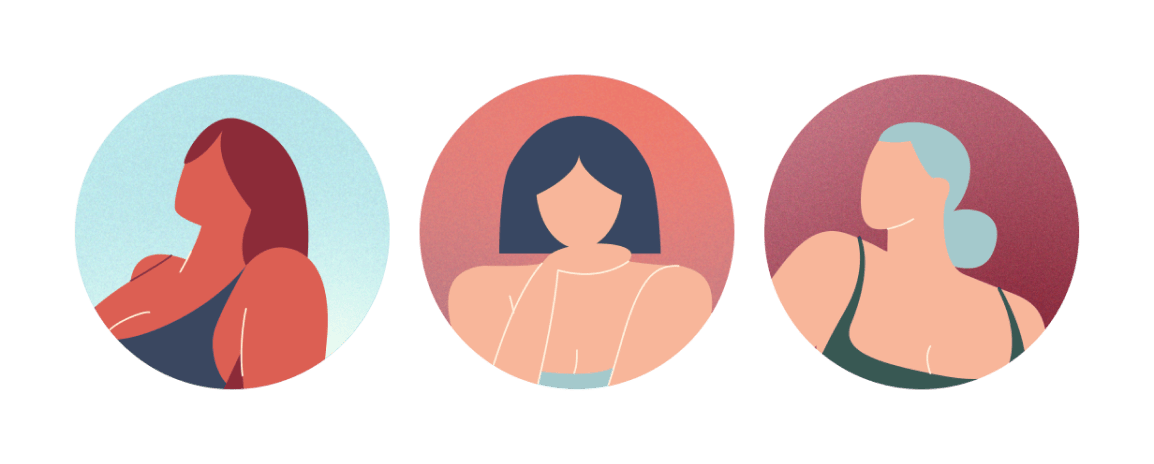
Body
Get to know your body through a better understanding of your anatomy and find the answers to some of your most common questions.

Many of us have grown up being told – explicitly or implicitly – that our bodies are off limits to us, that they are not ours alone. This can have a multitude of different repercussions, from leaving us feeling disconnected from our bodies to being unable to experience pleasure. One way to start to rebuild that bridge with our bodies, our sexuality, and our pleasure, or to explore it further, is through pleasure mapping.
Pleasure mapping is a technique that involves exploring one's body to discover which areas feel pleasurable when touched or stimulated. This exercise can be performed alone or with a partner, and it often involves touching or caressing various parts of the body — not just those traditionally associated with sexual pleasure — to identify what feels good.
The goal of pleasure mapping is to gain a better understanding of your body and what brings it pleasure, which can improve sexual satisfaction, enhance intimacy in a relationship, and boost overall body confidence. It's also a great way to communicate with a partner about what kinds of touch or stimulation are enjoyable.
For those who have experienced sexual trauma or discomfort, pleasure mapping can be a helpful technique for regaining comfort and trust in physical touch and intimacy, though professional guidance is recommended in these cases.
Pleasure mapping can be a powerful tool for sexual self-discovery and can encourage an individual to take an active role in their sexual pleasure. It fosters a positive relationship with one's body and can be a useful technique for anyone, regardless of their sexual experience or knowledge.
Here are some steps and tips to help guide you if it’s your first time trying this.
Make sure you're in a private, comfortable setting where you won't be disturbed. This could be your bedroom, your bathroom, or any place where you feel safe and at ease. Consider dimming the lights, lighting candles, or playing soothing music if that helps you relax.
Take some time to relax and get in tune with your body. This could involve deep breathing, meditative exercises, or a warm bath. You want to be as relaxed and present as possible.
Begin by touching your body in non-sexual ways. This could be stroking your arm, touching your face, or running your hands over your legs. Pay attention to how each touch feels and which areas respond positively.
Try different types of touch such as light feather-like touches, firmer strokes, or varying the speed of your touch. Pay attention to the different responses your body has to these changes.
As you explore, take note of which areas of your body respond most positively to touch. This could be areas that cause a physical response, such as goosebumps or muscle tension, or simply areas that feel good when touched.
As you become more comfortable, you can start to explore more traditionally sexual areas of your body if you feel comfortable doing so. This is entirely optional and should only be done if it feels right for you.
There's no rush in pleasure mapping. The goal is to explore and learn about your body, not to reach orgasm (although that's perfectly okay if it happens!).
Consider keeping a journal of your discoveries. This can help you remember which types of touch and which areas of your body you enjoyed most, and it can also serve as a way to communicate with a partner about your preferences.
Our bodies can respond differently to touch at different times and in different circumstances, so consider repeating this process regularly to continually learn and adapt to your body's responses.
While pleasure mapping can be an extremely powerful step or tool in healing from sexual trauma, for some, it can potentially trigger painful memories or emotions. Therefore, it's strongly recommended to involve a mental health professional before beginning. These experts can provide guidance and support tailored to your needs, and help manage any arising difficulties.
It's crucial to ensure you're in a safe, comfortable environment where you feel in control, and remember, you can stop at any point if it becomes overwhelming. Grounding techniques, focusing on present sensations and surroundings, can be helpful to avoid becoming consumed by negative emotions or memories. Always prioritize your safety, comfort, and consent throughout this process.
The key is to approach this activity with an open mind and a sense of curiosity about your body and its responses. There is no right or wrong way to feel, and everyone's body responds differently to various types of touch.
RELATED: 5 Tips to Use a Pleasure Product With a Partner, 5 Ways Self-Pleasure Can Benefit Your Health and Relationships, How to Choose a Pleasure Product, How Our Bodies Store Trauma
An exercise that can be performed alone or with a partner that involves exploring one’s body to discover which areas feel pleasurable when touched or stimulated, not just those traditionally associated with sexual pleasure.
Did you find the answer you were looking for? Is there something we missed? What did you think of this resource? We want to hear from you.
